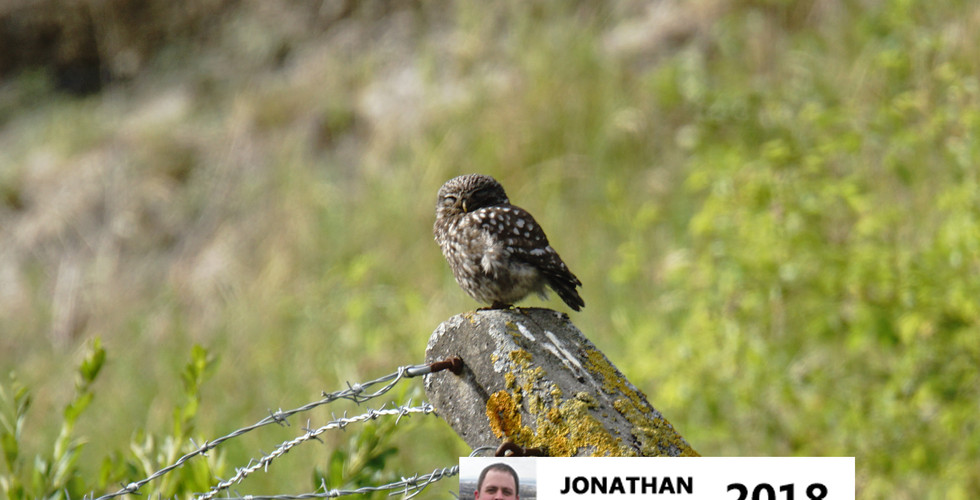BRILLIANT BLACK TERN @ RSPB ST AIDANS
- Jonathan Marshall
- Jun 23, 2018
- 5 min read

On Saturday I visited RSPB St Aidans which is located south east of Leeds and only a couple of miles west of another RSPB reserve, Fairburn Ings. St Aidans is a former opencast coal mine which operated right up until 2002 and there is still a Dragline Excavator next to the visitor centre which was imported from the US in 1946, weighing in at whopping 1,220 tons and is nicknamed Oddball.
In March of 1988 part of the banks of the River Aire failed and the 3 opencast mines at the site were flooded. RAF Chinook Helicopters were brought in to ferry sandbags into the breach to try and stem the flow of water without success. Opencast mining obviously had to be stopped and work costing £20 million to drain the site and re-route the river was undertaken
St Aidans is made up of woodland, grassland, reedbeds, lakes, reservoirs and the River Aire along the reserve's southern border. There are four trails as well as other footpaths and bridleways that you can follow and they are Bowers Bimble, Lowther Loop, Hillside Hike and Reedbed Ramble. The Bowers Bimble trail starts from the car park and takes you round Bowers Lake and is 1.1 miles in length. Lowther Loop trail takes you in to the south eastern corner of the reserve round Lowther & Oxbow Lakes and along the banks of the River Aire, this trail is 1.7 miles long and again starts from the car park.
The Hillside Hike takes you up the hill at the northern end of the reserve through woodland and grassland, this is a good spot for seeing Short Eared Owls in winter and is 2 miles in length. The longest trail is the Reedbed Ramble, which is 3 miles in length and starts from the visitor centre. The trail heads along the bottom of the hillside until you reach the reedbeds and then goes round in a big loop around the edge of the reedbeds returning to the path back to the visitor centre.

Before I headed off on the Reedbed Ramble Trail I had a quick look at the compound containing the dragline excavator and sat on top of a red brick building at the back of the compound was a Little Owl. I walked down the hill and followed the path along the bottom of the hill to my right and perched among the bushes was a Reed Bunting with a Small Tortoiseshell butterfly just off the path. As I continued along the path towards the reedbeds I saw more Reed Buntings amongst the bushes as well as a single Whitethroat.
Over to my left, just over a narrow channel of water, there was a single Meadow Pipit at the top of a pile of dried mud. As I reached the reedbeds I could see a large number of Black Headed Gulls swirling over the western half of the reedbed and in the reeds near the path I saw a pair of Reed Warblers moving along from reed to reed before disappearing. I took the path going anti clockwise round the reedbed and all along the reed bed I saw Black Headed Gulls and Coots to my left as well as a pair of Greylag Geese with their young.

As I reached the point where the path turns to the left I took a slight detour and headed straight on to Fleakingley Reservoir where there were Coots, Pochards and Great Crested Grebes as well as quite a few Black Headed Gulls. Flying overhead were quite a few Common Terns and they were diving into the water for fish just in front of me. I had been watching the Common Terns for a couple of minutes when I spotted a Black Tern amongst the Common Terns and after flying a few circles over the lake it disappeared.
Flying around me amongst the wild flowers and tall grass was a pair of Six Spot Burnet Moths. These were the first of more than fifty Six Spot Burnet Moths that I would see on my walk around St Aidans. I returned to the trail path and turned left onto the footpath that cuts through the centre of the reedbeds. To my left I saw a few Tufted Ducks and to my right I saw yet more Coots, Greylag Geese and Black Headed Gulls as well as a few Reed Warblers darting along the edge of the reeds.

I had walked about half way along the path through the reedbeds when I spotted a lone Linnet perched on a bush amongst the reeds. A few seconds later it flew across the water and briefly landed on a gorse bush before flying off back over the water and reeds and out of sight. A little further along a group of Black Headed Gulls were sat in the middle of the path and as I approached them they took off en masse.
As I reached the edge of the reedbed I saw a couple more Tufted Ducks and Mallards either side and from where the path re-joins the Reedbed Ramble Trail I was able to see hundreds of Black Headed Gulls on the islands in the middle of the main lake. I now turned right and walked along the southern side of the western reedbed where after about one hundred yards a pair of Great Crested Grebes appeared to be gathering nesting material. In the bushes to the right of the path I could hear Reed Buntings and a little further along I saw more Great Crested Grebes, Greylag Geese, Coots and Tufted Ducks in the water to my right.

In the tall grass to the right of the path, perched on a Common Knapweed, was a Small Heath butterfly and on the left hand side of the path was a Six Spot Burnet Moth, also on Common Knapweed. As I reached the end of the reedbed, the path turned to the right and moving from bush to bush at the edge of the reeds was a Whitethroat, Reed Bunting and Reed Warbler. I walked round to have a look at Astley Lake from where I could see Common Terns, Black Headed Gulls and a pair of Cormorants.
I now walked back along the path through the reedbeds where I spotted more Reed Warblers and on a grassy bank at the edge of the water I saw several Common Spotted Orchids. As I reached the end of the path a group of Starlings flew over and I turned left along the edge of the eastern reedbed and started the walk back to the visitor centre. There were a couple of Mute Swans in the water to the left and perched on the fence to the right were several Black Headed Gulls.

I reached the end of the loop and turned right along the trail leading back to the visitor centre. A little further along I spotted a pair of Meadow Pipits on the same dried mud where I had seen the single one earlier. As I continued along the path I saw and heard a few more Reed Buntings in the bushes to my left and a Kestrel flew overhead, which was then chased by a Crow. After a quick visit to the visitor centre I went and had another look round the dragline excavator compound to see if I could see the Little Owl.

In recent years both Kestrels and Little Owls have nested within this compound and after a look round at the front and from the left hand side I could not see it. I went round to the right hand side where you can look through the fence along the back of the compound and there, perched on top of a concrete pillar, was the Little Owl. The Little Owl was fast asleep but after a few minutes he woke up and started stretching and then started to preen himself.
I have attached a few photos and full sightings list from my visit to RSPB St Aidans.


















































































Comments